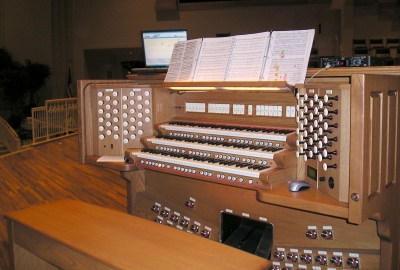
The first person to attempt to create sounds electronically was an American inventor, Thaddeus Cahill. He invented an instrument called a telharmonium in 1906, which used electric motors and telephone receivers to produce sounds, but without much success. By 1920, a Russian scientist named Leon Theremin generated electronic sounds using two radio-wave oscillators; it was played by moving the hands round its aerials. This altered the circuit tuning and produced sound – varying according to the hand position – from the loudspeakers. The instrument was called a Theremin.
The forerunner of today’s synthesizers was built for acoustical research by the Radio Corporation of America (RCA) at Princeton, New Jersey, in 1955. It was fed with punched paper tape, and the punched code activated the sound generators, filters and amplifiers. The music was recorded on tape.
Because the RCA synthesizer circuits used thermionic valves – electronic vacuum tubes – it was large enough to fill a room. In the 1960s, an American physicist, Robert Moog, developed the Moog synthesizer with circuits based on transistors. Further development in electronics bought the modern synthesizer down to portable size.
FM synthesis, the basis for the digital synthesizers of the 1980s, was invented by Dr John M. Chowning of Stanford University, California. The idea of sampling, on which most modern synthesis is based, was introduced by Australians Peter Vogel, Kim Ryrie, and Tony Furse with their Fairlight Computer Musical Instrument (CMI).
Picture Credit : Google




